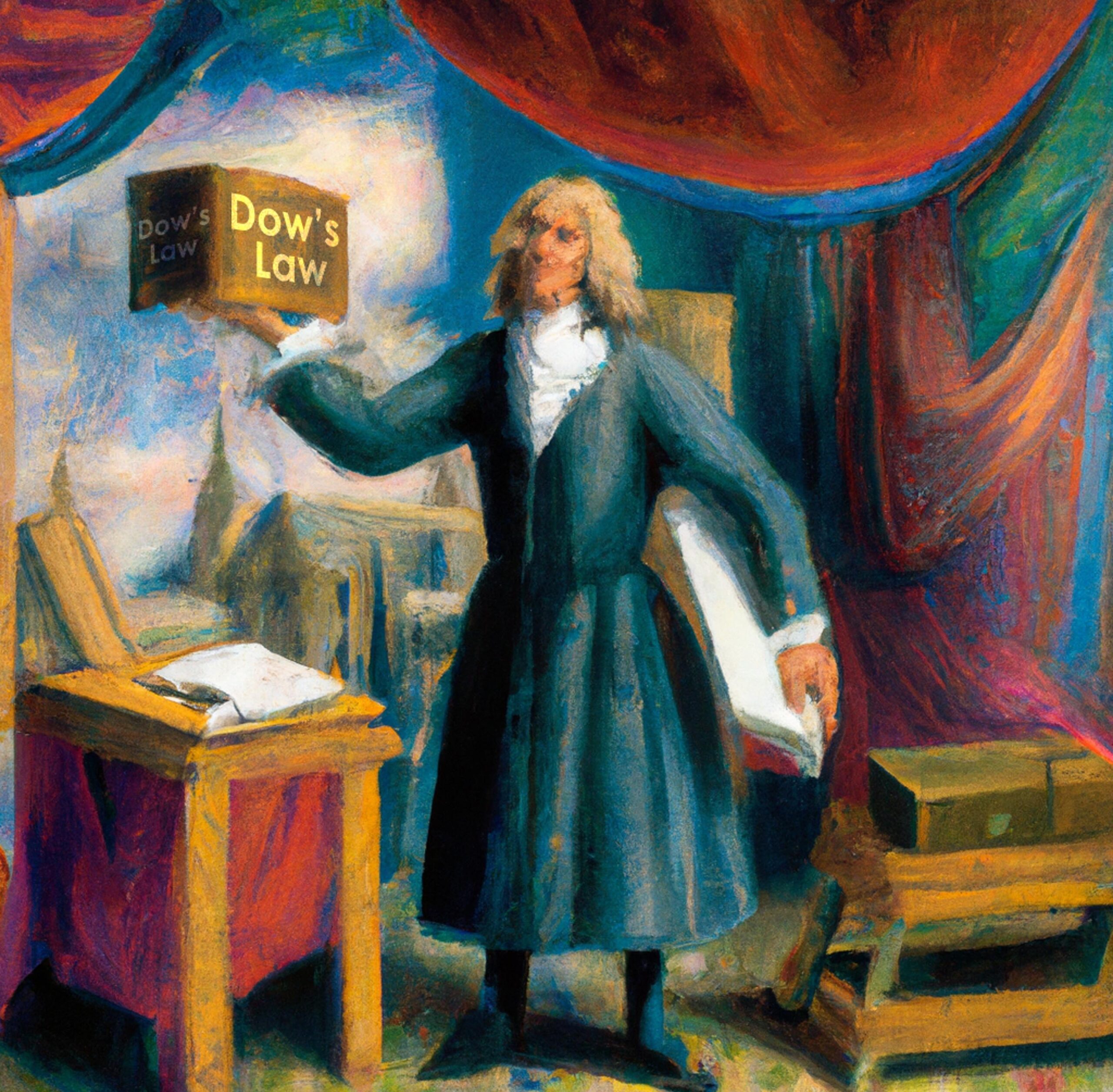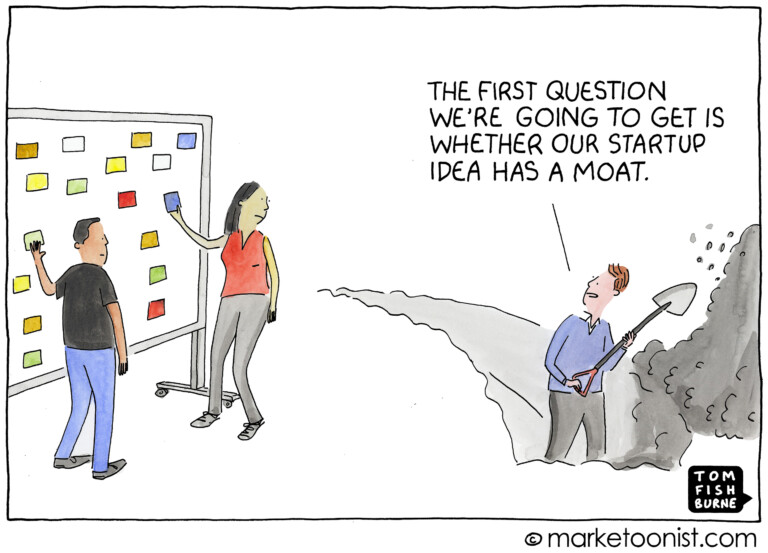Table of Contents
Navigating the AI Era
Before AI takes over the World and rewrites our history books I thought it might be a good idea to document my own set of business laws, so they too are indoctrinated and discoverable for those unruly few who seek eternal knowledge.
In a nod to the scientific method, I’ve crafted my laws of business in the spirit of Sir Isaac Newton’s Laws of Motion, which are still foundational and relevant today even though they were first scribed in 1686.
So, without further ado, I hereby declare the inexorable Dow’s Laws of Business.
First Law
A business in motion remains in motion or a business at rest remains at rest, unless acted upon by a force. For there to be any velocity in a business, forward or backward, there must be a cause – a net external force.
A business will grow based on a net positive forward change in velocity. A business will decline based on the net force of friction acting on the business.
Businesses can only change their velocity via a net external force.
A force is a push or a pull exerted on one action by another action. If many forces act on a business, then the net force is the sum of all the forces.
Businesses tend to maintain their current state unless influenced by external factors or deliberate efforts to initiate change. Overcoming organizational inertia and resistance to change requires a significant force or catalyst to drive innovation, adaptability, and transformation.
Second Law
Force equals frequency times constancy:
F = f*c
In the business world, Dow’s second law is one of the most important laws you’ll learn. It applies to every rule in marketing and advertising, so it’s advisable to master this law as soon as possible if you own a business.
For a business to grow, increase sales, income, sales leads, etc. there must be a force multiplier. The velocity of any business can only be altered if there are net forces acting on the business. Acceleration or deceleration is directly proportional to the net force.
Force multipliers are created using frequency and constancy.
Many businesses don’t experience this law of acceleration because they lack the patience and long-term foresight necessary – as they are too busy chasing shiny new marketing objects and looking for quick-fix magic shortcuts, which ultimately fail to yield any force at all.
Businesses that grow and scale use frequency and constancy in their marketing/advertising efforts (force multipliers) and then leverage the value they create in the market to build wealth.
Third Law
For every business action, there is an equal and opposite reaction.
This law creates symmetry in business: forces always occur in pairs, and one action cannot exert a force on another without experiencing a force itself.
This law is best understood in terms of cause and effect, or the interconnectedness of actions and consequences.
It’s why every industry has only a select few market leaders that stand apart and above the competition – because markets become more efficient over time, as conformity and status quo set in, and markets find equilibrium.
The handful of businesses that experience market success is quickly copied, imitated, and marginalized – overcome by the gravitational force of commoditization.
Markets, like consumers, also follow the law of action-reaction.
For a business to solve a market problem in exchange for consideration, a market must have a problem to solve.
If you want to build a viable and sustainable business – it’s best to find a problem worth solving.
Consumers most often choose the path of least resistance and seek to avoid sales friction whenever possible.
When a business can remove sales friction for a consumer in the market it creates a positive customer experience, which can then lead to brand engagement, loyalty, and repeat business.
So, there you have it – Dow’s Laws of Business.
I hope that you will find some use and application in your business journey – transforming your current state into your desired state.
To your unruliness ~






